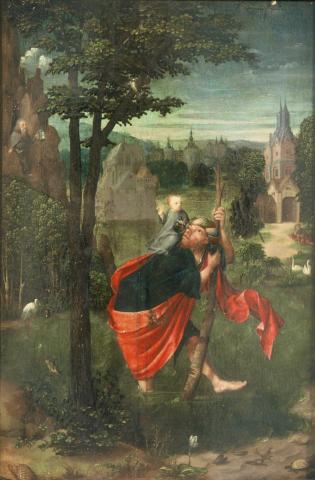Recommendation
In a letter dated 16 February 2009, the Minister for Education, Culture and Science (hereafter referred to as: ‘the Minister’) asked the Restitutions Committee (hereafter referred to as: ‘the Committee’) to issue a recommendation regarding the decision to be taken on the application dated 26 September 2008 by E.L.H. of G., U.S.A. (hereafter referred to as: ‘the applicant’) for the restitution of the painting St Christopher by the Meester van Frankfurt (15th century). This work is currently part of the Netherlands Art Property Collection (NK collection), which is administered by the Dutch government under inventory number NK 2556, and is currently housed in the Mauritshuis in The Hague.
